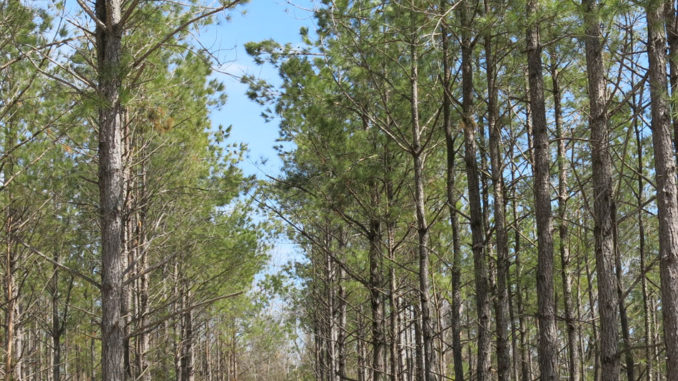
Beyond the values to wildlife received from cutting timber, landowners can receive monetary returns. But knowing when to sell a tract of timber offers some uncertainty to the unknowledgeable landowner. Thankfully, there are registered consulting foresters to assist landowners.
As soon as timber is considered merchantable, there can be immediate payback. However, timber is a commodity and will bring in variable returns as the market fluctuates. Over the past 100 years, timber markets in the Carolinas have ebbed and flowed from extreme highs to dreadful lows. Even in the past 10 years, landowners have observed moves in both directions. For some landowners with unique timber assets, value can fluctuate to extreme levels in a single calendar year.
No doubt, timber prices fluctuate depending on a huge list of variables on a local, regional, and global scale. However, the primary driving factor in any market, supply and demand, can also be applied to forestry.
Depending where the timber is and what the tract holds determines how volatile timber values can be. Demand for a product can only be met by the available supply in a market area.
Location within range of suitable markets is a major driving factor, since timber must be trucked on 18-wheelers from land to mill. It is generally transported to markets less than 100 miles away because trucking costs detract from net income. But most tracts of timber will be within reasonable driving distance from forest-production facilities.
Timber products go to a variety of domestic and foreign uses: pulp/paper, lumber, veneer and even fuel. The volume of finished products produced regionally is enough to generate a constant flow of demand on any given day. But the demand on a local level and the state of the global markets are major contributors to the price a landowner will receive.
In the Southeast, the two largest components of standing timber are pulpwood and saw timber. Pulp mills, also known as paper plants, need a mixture of pine and hardwood. These pulp mills require major, daily contributions in order to operate on schedule and meet all orders.
Pine sawmills are the second-largest contributor to the market. The remaining markets — hardwood sawmills, veneer facilities — also contribute to a certain level of demand that can affect the price a landowner can receive.
While the market fluctuates throughout the year, annual trending in wood-product sales is a more significant variable. Landowners must make sound decisions based on both stand improvement and whether the harvesting regime will offer expected financial returns.




Be the first to comment